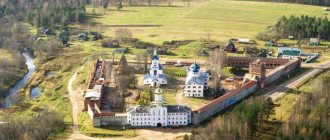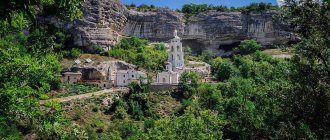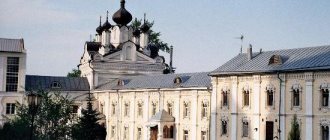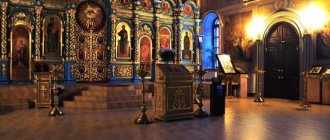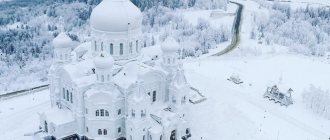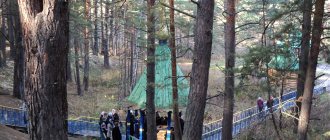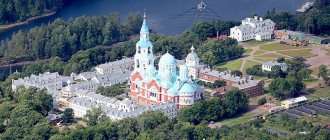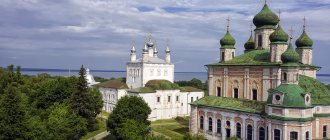Just 18 km from Rostov is the stunning Borisoglebsky Monastery. It is perfectly preserved, especially considering its advanced age. The massive walls of the monastery cause some bewilderment: do monks really need such reliable protection from worldly vanities? Borisoglebsky Monastery in the Yaroslavl region is a real fortress with its towers, gates and loopholes. After all, the troubled times in which it was erected were overshadowed by Tatar raids, princely feuds, and Polish invasions.
The emergence of the monastery
The monastery was founded during the time of Dmitry Donskoy in 1363 by Novgorod monks Feodor and Pavel. Sergius of Radonezh himself gave the blessing for its construction. A small wooden monastery was built on a hill, near the small river Ustye. The noble princes Boris and Gleb, who were widely revered in Rus' at that time, were chosen as patron saints for the future temple. Its territory was surrounded by fortified walls, and church buildings were built inside. The new Borisoglebsky monastery in the Yaroslavl region quickly gained good fame, and pilgrims flocked to it. Vasily II the Dark, the Great Prince of Moscow, found refuge here, and later baptized his son, the future heir to the Russian throne, Ivan III, here. And the legendary Peresvet took his monastic vows within these walls. The brightest page of the monastery is the life of St. Irinarch. He was born in 1547 in the neighboring village of Kondakovo. Until the age of 30 he lived in the world, bore the name Elijah, and then came to the Rostov Boris and Gleb Monastery.
Architectural monuments of the Rostov Boris and Gleb Monastery
The very first stone buildings on the territory of the monastery appeared in the 16th century. The Boris and Gleb Cathedral, made of stone, was founded in 1522 by decree of Tsar Vasily III where a wooden temple of the same name stood before him. The merits in the construction of the beautiful cathedral are attributed to the then famous architect Grigory Borisov, who two years later participated in the construction of the Annunciation Church on the monastery territory. Near the wall of the Boris and Gleb Church there is a tomb in which Pavel and Fyodor, who founded the monastery, are buried.
This cathedral was rebuilt many times. As in many Orthodox churches, over time its sub-room roof was replaced with a modern hipped roof. This coating was cheaper and more practical, but did not change the appearance of the church building for the better. During the reconstruction of the Boris and Gleb Cathedral carried out in 1925, evidence was found that it was once even made with five domes.
The stone Annunciation Church was also built in the 16th century as a refectory church on the site where a wooden church stood before it. A century later, it was also subjected to major alterations.
In addition, a stone two-story abbot's building, erected in the 16th century, was preserved on the territory. This was a great rarity and spoke of the wealth of the monastery. Since in other places in those days, monastery buildings were made only of wood. To the north of the abbot's chambers there is a one-story building for the brethren, in which monks and novices lived.
Inner courtyard of the Rostov Boris and Gleb Monastery
The monastery was surrounded by a brick wall during the reign of Tsar Ivan the Terrible. At the beginning of the 17th century, during the Time of Troubles, it was this defensive line that met the approaching Polish-Lithuanian army. But historians have different versions about the outcome of the confrontation. Some believe that the monastery was conquered and plundered, others that the Poles were forced to retreat. There is also a legend that the Monk Irinarch managed to convince the Poles, led by Hetman Sapega, not to touch the monastery. What is known for certain is that after the invasion the monastery fortifications were rebuilt.
What makes the monastery very expressive is not only the defensive walls with powerful towers, but also the majestic gate churches - Sergievsky (1679) and Sretensky. Climbing up the monastery fortifications, you get an excellent overview of the entire territory and the surrounding area.
Irinarch the Recluse
In the Borisoglebsky monastery of the Yaroslavl region, he took monastic vows and began to be called Irinarh. Here, in fervent prayer, he was illuminated by the sign of living for God, and after some time he received a blessing for his feat - a voluntary retreat. In a cramped cell, bound with chains and shackles, hung with crosses and taming his flesh with an iron rod, he worked diligently for the glory of the Lord. Irinarch spent 38 years in “imprisonment,” continuously praying for salvation. He had the gift of foresight and special fearlessness: he predicted the attack of the Poles on Rus' to Tsar Vasily Shuisky, and Sapega, the Polish hetman, would soon die if he did not get away from Russian land. To the leaders of the people's militia, Minin and Pozharsky, he sent a blessing for the battle and one of his crosses. Irinarch’s spiritual feat was appreciated by his contemporaries, “angels marveled at his patience,” and his suffering amazed all of Rus'. People came to him from everywhere for blessings, healing, and miracles. Posthumously, Irinarch the Recluse was canonized and elevated to the rank of revered saints.
Stone construction
After complete dilapidation of wooden buildings, the Borisoglebsky Monastery of the Yaroslavl region began to “dress” in stone in 1522.
The reconstruction of the holy monastery was organized by the Rostov architect Grigory Borisov. In the 17th century, large-scale construction took place on the orders of Metropolitan of Rostov Ion Sysoevich. All existing buildings were rebuilt and new ones were erected. The monastery turned into a powerful fortress that defended the western border of Rus'. Its walls are unique: their length is more than 1 km, thickness up to 3 m, height 10-12 m; They are adapted both for combat operations and for religious processions. 14 towers were built along the perimeter. The highest of them is located in the northeast, reaching a height of 38 m. There are 2 gates in the fence: northern and southern. Over the northern ones, in the 16th-17th centuries, the Sretenskaya Gate Church was erected, distinguished by its lightness, elegance and beauty. Above the southern ones, the Sergius Gate Church was built in 1679, which received its name in honor of Sergius of Radonezh. The oldest building dates back to 1526 - this is the building of the Boris and Gleb Cathedral. It is here that the holy relics of St. Irinarch and the founding monks Fyodor and Paul rest. The Moscow princes highly valued the Boris and Gleb monastery and revered it as “homely.” In the 18th century, the monastery became the center of local settlements, handicrafts actively developed here, and magnificent fairs were held. At the end of the century, Catherine II transferred a significant part of the monastery lands to her favorite, Count Orlov. At that time, most of the monastery's valuables were stolen and sold. But by the beginning of the 20th century, the monastery had gained a stable position; it was revered by both the authorities and pilgrims.
Shrines[edit]
The cell of the Monk Irinarch and the saint’s chains have been preserved. His relics rest in secret. A wooden cross of St. Sergius of Radonezh is kept in the Annunciation Cathedral as a blessing to the founders of the monastery. The founders themselves prpp. Theodore and Paul were buried in the northern corner of the Boris and Gleb Cathedral.
- the power of St. Pavel and Theodore of Rostov (Borisoglebsky)
- the power of St. Irinarch of Rostov
- chains of the power of St. Irinarch of Rostov
Soviet time
The advent of Soviet power was marked by a general persecution of the church and religion. Despite the fact that the Boris and Gleb Monastery in the Yaroslavl region was abolished in 1924, services there continued until 1928. The monastery belfry miraculously escaped destruction; some valuables were transported to the Rostov Kremlin and the Tretyakov Gallery. And yet most of the sacred relics were irretrievably lost. What kind of “interpretations” has not the Boris and Gleb monastery undergone! Since 1930, a police dormitory and a post office, a savings bank and grain warehouses, garages of the regional consumer union and a power plant were located here, and the production of confectionery and sausage products was established. Since 1970, the monastery has become a branch of the architectural and artistic Rostov Museum-Reserve.
Our days
The Borisoglebsky Monastery of the Yaroslavl region, according to the description of ancient written sources, has retained its appearance since the end of the 17th century. In 1989 it began to operate as a parish church. Divine services there were restored in 1990, and in 1994 it was completely revived. Today, the active monastery shares its territory, temples and buildings with the museum. Since 2015, the monastery has been entirely given over to the management of the Orthodox Church. The complex includes several monastery buildings, which bear the title of architectural monuments, are perfectly preserved, but, unfortunately, are being restored very slowly. Hence the numerous reviews from visitors to the monastery territory about the atmosphere, some neglect and dilapidation of this holy place.
Amazing find
Architect Alexander Rybnikov is a well-known personality in Borisoglebsky. Since the late 80s, he has carried out restoration work on the territory of the monastery. And when, in the 90s of the last century, a group of restorers accidentally fell into an unidentified cavity, an intra-wall passage was accidentally opened. The entrance to it was covered by an 18th-century ceiling, and when it was opened, a 16th-century vault was revealed to everyone, perfectly preserved to this day. Below it were niches in which fragments of ancient frescoes were neatly placed. Rybnikov calls his work both a test of God and a joy, but that incident in his practice to this day causes him delight.
Abbots
- Abraham (Florinsky) (1773-1775)
- Iriney (Klementyevsky) (December 25, 1784 - June 30, 1788)
- Arseny (Todorsky) (June 30, 1788 - May 22, 1792)
- Evgeny (Romanov) (1794 - 1795)
- Anatoly (Stavitsky) (1802 - November 1, 1808) [1]
- Feofan (Alexandrov) (1814 - 1816)
- Neophyte (Dokuchaev-Platonov) (September 25, 1816 - February 6, 1820)
- Pavel (Morev-Pavlov) (May 1821 - May 21, 1823)
- Amfilohiy (Sergievsky-Kazantsev) (1852 - 1858) [2]
- Daniil (Sivillov) (August 9, 1863 - 1871)
- …
- John (Titov) (mentioned 2013)
Excursions around the monastery territory
The guide of the Borisoglebsky Monastery in the Yaroslavl region, Natalya Sheina, won the “Best Guide” category in 2016.
A team of professionals has collected a wealth of materials about the Boris and Gleb hieromonks, the past and present of the holy monastery. A tour of the territory can be booked at the church shop located at the entrance. Check in advance whether visiting temples is included, as they are sometimes closed to tourists. In the Rostov Kremlin Museum, which shares the territory with the monastic brethren, you can see photos of the Borisoglebsky Monastery in the Yaroslavl region in different years of its existence, get acquainted with its history, and learn about the life of novices. Information is presented in interesting and educational presentations.
Important information: during the procession of the Cross, access to the monastery territory is limited, churches are closed. Treat this with respect.
Literature
- Memory of the Venerables Theodore and Paul of Rostov, founders of the Boris and Gleb Monastery // Lives of the Saints in Russian, set out according to the guidance of the Chetyih-Menya of St. Demetrius of Rostov: 12 books, 2 books. add. - M.: Moscow. Synod. typ., 1903-1916. - Vol. II: October, Day 22. - P. 508.
- Bukatina Yu. E., Springis E. E.
Borisoglebsky Monastery at Ustye // Orthodox Encyclopedia. - M.: Church and Scientific, 2003. - T. VI: “Bondarenko - Bartholomew of Edessa.” — P. 67-70. — 752 p. — 39,000 copies. — ISBN 5-89572-010-2. - Danilova L.
“Victories began in this place.” Borisoglebsky, on Ustye, men's monastery // Journal of the Moscow Patriarchate. - 2007. - No. 9. - P. 72-91. - Melnik A. G.
Interior of the Baptist Church of the Rostov Boris and Gleb Monastery // Monasteries in the life of Russia. — Kaluga; Borovsk, 1997. - P. 145-149, 277-278. - Melnik A. G.
About the belfry of the Boris and Gleb Monastery // Messages of the Rostov Museum. Vol. 7. Bells and bell towers of Rostov the Great. - Yaroslavl, 1995. - P. 215-226., - Melnik A.G.
Fresco over the tomb of the Venerable Theodore and Paul in the Cathedral of the Rostov Boris and Gleb Monastery // From the Middle Ages to the New Age: Collection. Art. in honor of Olga Andreevna Belobrova. - M., 2006. - P. 360-364. — ISBN 5-85759-390-5. - Melnik A.G.
Church of St. Sergius of Radonezh of the Rostov Boris and Gleb Monastery // XV Zolotarev Readings. Materials of the scientific conference. - Rybinsk, 2014. - pp. 74-81. — ISBN 978-5-905293-03-0. - Melnik L. Yu.
History of the bells of the Boris and Gleb Monastery // Messages of the Rostov Museum. Vol. 7. Bells and bell towers of Rostov the Great. - Yaroslavl, 1995. - P. 227-238. - Melnik L. Yu.
On the history of the Boris and Gleb Museum // Communications of the Rostov Museum. Vol. 1. - Rostov, 1991. - P. 120-131.
Divine services in Boris and Gleb Cathedral
The first concern of the brethren was the restoration of the holy spring in the revived monastery. Thanks to the help of residents of the Borisoglebsky village and the Ivanovsky village, the well and bathhouse were built during the summer holidays. The fame of its healing power is widespread, so it is crowded at any time of the year. Then the cell of the great saint Boris and Gleb recluse Irinarch was restored. And in 1997 they held the first Irinarkhovsky religious procession, which became an annual tradition. The course lasts 5 days and has an official website where information about the time and location of the events is posted. For more than 10 years, a hierodeacon, 3 hieromonks, 2 monks and 3 novices have been laboring in the monastery. They revived the holy tradition on Sundays, after the Divine Liturgy, to walk around the monastery walls in a procession of the cross. From Easter to the Intercession, the monastic brethren and parishioners, pilgrims and local residents walk around the walls. A prayer service with Akathist is served at the shrine of St. Irinarch.
The schedule of services at the Borisoglebsky Monastery in the Yaroslavl region is schematically presented in the table.
| Day of the week | Beginning of the service | End of the service |
| Weekdays | 7.30 | 19.00 |
| Weekends and holidays | 8.00 | 21.00-21.30 |
Schedule of services
The Borisoglebsk Hermitage is visited from 7:00 to 20:00; with the permission of the rector, tourists can photograph the process of worship and the interior decoration of churches.
Divine services are held on weekdays from 7:30 to 19:00, and during celebrations - from 8:00 to 21:00.
Divine service in the Rostov Boris and Gleb Monastery
Today, ten monks live in the monastery under the leadership of one abbot. They serve in churches, and also garden and apiary. There is also a church shop and a museum where they will tell about the centuries-old history of the complex.
Revival of monophonic singing
People come to Rostov the Great to venerate miraculous icons, venerate holy relics, and feel the grace-filled power of life-giving springs and the life-giving cross. And recently, the opportunity to enjoy a special church singing called the “Great Chant” has become available. Its long history begins with the name of Metropolitan of Rostov Varlaam Rogov, who in 1587 headed the Rostov See, which was later renamed Metropolis.
According to the researcher of ancient Russian music N.P. Parfentyev, Varlaam’s stichera of the cross are distinguished by many extensive intra-syllabic melodic turns. Since the 17th century, partes singing has been spreading in Rostov, and then throughout Russia. Until the beginning of the 20th century, church singing practice presented a very diverse picture, both in repertoire and in the strength of performance.
In the post-revolutionary period, when most churches and monasteries were abolished, simple everyday singing began to be practiced. Since the 1990s, thanks to the efforts of B.P. Kutuzov, Znamenny singing is being revived during services. In the summer of 1997, a new monk appeared in the holy monastery, a student of Kutuzov, the future father of the Borisoglebsky monastery in the Yaroslavl region, Sergius Shvydkov.
Through his efforts, “monophony” was gradually restored, which he describes as a casket of precious stones, when the songs, endowed with their own color, form a palette, a colored mosaic. Some services in the monastery are performed entirely using the “Great Chant” technique. Hieromonk Sergius together with followers of V.P. Kutuzov conducts concerts, popularizing the famous chant. For this purpose, a choir and a school for boys and men were organized. I would like to cite a few phrases of hieromonk, full-time cleric Sergius about chant, which most clearly characterize his attitude towards monophony: “...mood...calm life...inner peace...there is no limit to either sadness or joy...rejoicing...spiritual joy...the prayerful unification of people...”. Rostov Boris and Gleb Monastery, Yaroslavl region, Father Sergius Shvydkov and the famous chant represent an indivisible phenomenon of spiritual life.
Notes
- Rostov the Great. State Museum-Reserve "Rostov Kremlin" (unspecified)
(inaccessible link). Access date: March 6, 2008. Archived January 23, 2008. - Zdravomyslov K. Ya.
Theodore (venerable, founder and abbot of the Rostov Boris and Gleb Monastery) // Russian Biographical Dictionary: in 25 volumes. - SPb.-M., 1896-1918. - Lives of the Saints of Rostov, 1903-1916.
- The story of the Boris and Gleb Monastery from its early years and how it began (unspecified)
(inaccessible link). Date of access: December 23, 2012. Archived March 4, 2021. - A boiler house and a monument to Dmitry Pozharsky were opened in the village of Borisoglebsky
- Ensemble of the Boris and Gleb Monastery
Walk outside the monastery walls
The walls of the Boris and Gleb Monastery hide the most beautiful monuments of ancient Russian architecture. But even beyond them, in the village of the same name, there are interesting notable places, or rather, monuments:
- In 2005, a monument to Prince Dmitry Pozharsky, sculptor Mikhail Pereyaslavets, was erected. The height of the bronze bust mounted on a marble pedestal is more than 4 m. Back in 1612, Pozharsky came to Irinarch for a blessing in order to lead the people's militia.
- Then, in 2005, Zurab Tsereteli installed a sculpture of the monk of the Borisoglebsky Monastery, the hero Alexander Peresvet. The height of the bronze warrior is 3 m. His mortal duel with Chelubey strengthened the Russian spirit before the Battle of Kulikovo.
- In 2006, another monument to Tsereteli was opened. At his own expense, the sculptor made a 3-meter bronze statue of Irinarch the Recluse and donated it to the Borisoglebsky village.
- In 2007, the only monument to the Boyar in the Russian Federation appeared here. To the prince. Voivode" to Mikhail Skopnik-Shuisky. The composition by Vladimir Surovtsev depicts a commander who has not lost a single battle, riding a horse. Before all campaigns, he received a blessing from Irinarch.
Modern life of the monastic brethren
The monks living in the Borisoglebsky monastery in the Yaroslavl region carry out daily obediences both in the refectory and in the boiler room, light the stoves, and take care of the garden and vegetable garden on their territory. The monks also have their own apiary. The monastery takes an active part in the Pogost program, restoring and improving regional cemeteries, supports the military-patriotic club for children and youth “Svyatogor” and the spiritual and moral club “Slavs” for preschoolers, and publishes the newspaper “Monastic Frontier”.
Borisoglebsky Monastery in the Yaroslavl region, how to get there
Address of the Borisoglebsky Monastery: Yaroslavl region, Borisoglebsky district, Borisoglebsky village, pl.
Sovetskaya, 10. The federal highway M-8 leads to Rostov the Great. To get to the monastery, you need to get from Rostov to the village of Borisoglebsky. You can do this in several ways:
- by transport itself along the Rostov-Uglich highway;
- by regular bus departing from the bus station or railway station of Rostov in the direction of Borisoglebsky.
Links
- Borisoglebsky Monastery on the website “Temples of Russia”
- Boris and Gleb Monastery on the website sobory.ru
| Monasteries of the Yaroslavl region | ||
| Active |
| |
| Abolished (some) |
| |
| gold ring of Russia | |
Additional points Alexandrov Bogolyubovo Borisogleb | |
Miracles or God's grace
Local residents are still confident in the sanctity of this amazing place. They say that Saint Irinarch, with his prayers, drove out all the reptiles 7 miles from the monastery, and snakes were never seen here. Another story tells of the mysterious disappearance of a worship cross and a holy spring at the beginning of the revolution. And when a team of restorers carried out unique work here in the 1990s to straighten the almost destroyed wall, it not only came off in the right places exactly at the seams, but also returned to its place on its own at great speed. Whether these are miracles remains to be seen. But the fact that Boris and Gleb’s heart beats right here, within the walls of his monastery, remains a completely obvious fact.
Boris and Gleb Cathedral
Boris and Gleb Cathedral with a strict, calmly majestic facade was built according to the design of Nikolai Alexandrovich Lvov on the site of the old cathedral.
Exterior of the cathedral
The cathedral is made in the shape of a cube with five towering domes. In the center of the cathedral drum is an octagonal dome with semicircular windows. At the corners of the cathedral there are hemispherical domes with round windows, which are topped with gilded balls with crosses rising on them.
The facades of the temple are decorated with columns and porticoes, the walls covered with plaster are painted yellow. 4 porches, decorated with columns, are made of white stone.
Interior decoration
The interior of the cathedral looks strict, noble and simple. According to the architect's plan, the main role in the interior belongs to space flooded with light.
The interior walls are finished with smooth plaster imitating marble. In the niche is the image of King David. The cast iron floor is decorated with paintings. Under the spherical dome of the temple are images of the four Evangelists . In the niches and on the pillars there is an image of the prophets Isaiah and Elijah, the Resurrection of Christ and the kiss of Judas, the Transfiguration of the Lord and the Savior’s Prayer for the Cup.
The dome of the cathedral is supported by 4 pillars, between them there are arches with 12 columns, plastered in white marble and decorated with paintings. There are 37 icons on the iconostasis.
Initially, the cathedral had three altars: the main one - Boris and Gleb, on the right - in memory of St. Ephraim, on the left - Catherine's. The main altar was decorated with a three-tiered carved iconostasis, decorated with red gold.
